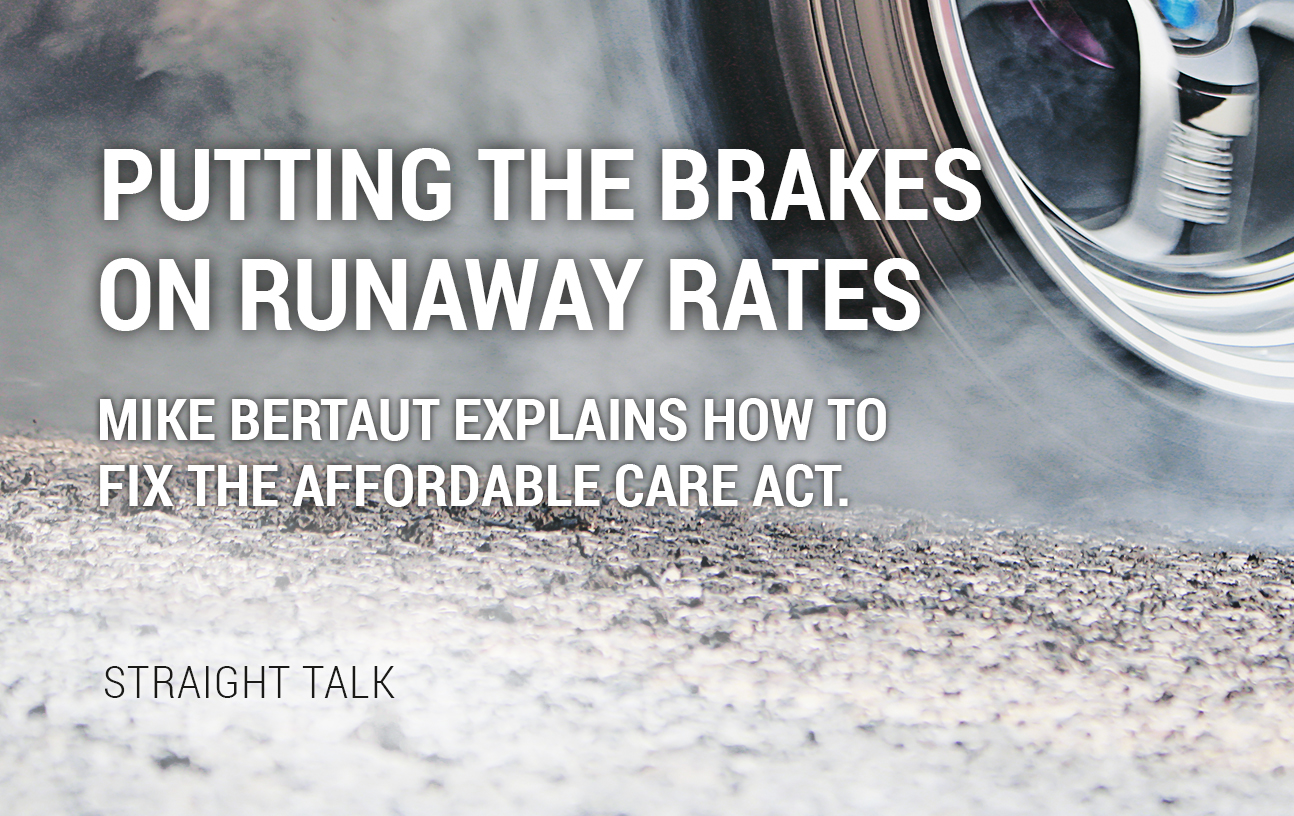The candidates on the campaign trail have their opinions about how to fix the Affordable Care Act (ACA), how to make health insurance marketplaces work better and how to get everybody insured. Every policy wonk and think tank in America has weighed in on the problem. Of course, their solutions are all in alignment with their institutional biases on how healthcare OUGHT to work in America.
Now it’s my turn to tell you how I think it should go. I’m just a simple Louisiana boy who wants my friends and family here in Louisiana to stop getting hit with rate increases each year. To do that, we have to change the ACA. Since Blue Cross joined the healthcare marketplace (healthcare.gov), we have lost around $200 million on the individual products we sell. And many other health plans around the country have seen the same. The Feds tell us we have to spend 85% of the money you give us on HEALTHCARE (not salaries or operations), so as soon as health plans stop losing money on healthcare.gov, premiums will go up a LOT slower.
How to stop the losses? I can answer this in a simple, two-step process. I can’t make it any easier for the powers that be than that.
(The individual) mandate no longer has any teeth. Younger folks have figured that out and aren’t buying coverage.
Step One: The Federal government has GOT to fix the leaks in healthcare.gov – If they are unwilling to do that, this runaway train will never stop. I can’t, Blue Cross can’t, none of US can do that — only the people responsible for running and setting the rules for the healthcare law can take this step.
“Ok, Mike, you’ve passed the buck back to Washington, D.C. — what are they supposed to do for their part?”
I’m glad you asked. It’s a very simple, four-part plan:
Fix Special Enrollment
While CCIIO (the federal agency that runs healthcare.gov) is nibbling around the edges on this, they really haven’t made a dent in the problem yet. As long as people can go to a website and claim something has happened to them whenever they want to (like getting married, having a baby, moving to another state, etc.), and then buy insurance without proof of that special event, insurance company losses will not stop. They need to see PROOF before they let someone buy coverage. It’s that simple. If you had insurance at work and you got married and wanted to add your new spouse to your policy, your employer would never DREAM of letting you do that without seeing your marriage license. Ever.
Tighten up the Individual Mandate
In the summer of 2013, when the IRS was looking over the law that says you have to have health insurance or pay a fine, they outlined three distinct exemptions – low-income, Native American or member of certain religious sects – to that mandate. These three made sense and were limited to a small percentage of the country.
Since then, 24 (yes, 24!) MORE exemptions have been added to the individual mandate! You can even avoid the fine if you have unpaid medical bills! That mandate no longer has any teeth. Younger folks have figured that out and aren’t buying coverage.
But Congress made a political decision that had nothing to do with actuarial practice and dropped the age rating down to 3:1. Now the average 25-year-old is paying roughly 75% too much for his coverage.
Fix Age Rating
When I sort our 2015 claims data by age of the person using healthcare, I find our healthcare.gov members who are 60-64-years-old use SEVEN TIMES as much healthcare as our members who bought off the exchange and were aged 19-24. So you would think older folks would pay 6-7 times more for their coverage, right? I mean, census.gov shows Americans’ incomes PEAK at age 55, not age 20.
So it seems fair that because older people make more and need more healthcare, the younger people shouldn’t have to subsidize them. Before the ACA, the age rating was 6:1, which means insurance companies could charge older people up to six times as much as a younger, healthier person for the same coverage. And many, many more young folks actively participated in the health insurance marketplace than they do today.
But Congress made a political decision that had nothing to do with actuarial practice and dropped the age rating down to 3:1. Now the average 25-year-old is paying roughly 75% too much for his coverage. Keep punishing the young and they will keep staying away.
Stop Pretending Nothing is Wrong
Blue Plans nationwide lost $2 billion of value over the past three years, and that has to be made up with increased premiums. At the same time, CCIIO keeps drastically changing the percentage of healthcare costs that its benchmark plan is expected to cover. The result – your deductibles and other cost sharing have gone up around 50% in three years, while premiums have gone up MORE than that! All because the risk pool of people insured is older than the public at large (because of the three things I mentioned above). You can’t fix a problem if you won’t admit it’s real.
To get a feel for how (a public health insurance) plan could lower access to care for many people, you might ask your favorite doc or hospital administrator how they would fare if Medicare was the BEST payer.
Step Two: Please Don’t Make It Worse! When I listen to the policy positions and platforms coming from the folks running for president and their people, I hear ideas that give me pause:
- Do away with the individual mandate? Check out the “Tighten up the Individual Mandate” section in the above listing. Doing away with the mandate is guaranteed to drive up costs.
- Stop funding cost-sharing reductions? These allow lower-income, working poor people to actually USE their insurance , instead of waiting until they are desperately sick and go to an emergency room, which is what most of them had to do before the Affordable Care Act. Clearly, increasing costs on the most vulnerable populations will cause their health to deteriorate, especially if that encourages them to avoid needed care.
- Refuse to pay insurance companies the money they were promised through the Risk Corridor program? That’s driving both losses AND massive rate increases already — do we really want to make this worse?
- Create a public health insurance option to compete with private health insurance companies? To get a feel for how this plan could lower access to care for many people, you might ask your favorite doc or hospital administrator how they would fare if Medicare was the BEST payer.
In many states today, the only health plan still selling on healthcare.gov in every one of their counties is a not-for-profit Blue Plan. Since these Blue Plans cannot raise capital by selling stock and cannot easily issue bonds or borrow money, they are doing this at GREAT risk. Why?
I can tell you why Blue Cross and Blue Shield of Louisiana is still in it. Because it is, and will remain, our mission “To improve the health and lives of ALL Louisianans.” But we can stay in the game only for so long — if the powers that be continue to ignore these massive problems, it will make it difficult for us to continue to participate in healthcare.gov. And that will drive up your costs even faster.
The answers are surprisingly obvious and simple. Let’s see if the folks in Washington have the guts to do the right thing.





Leave a Reply